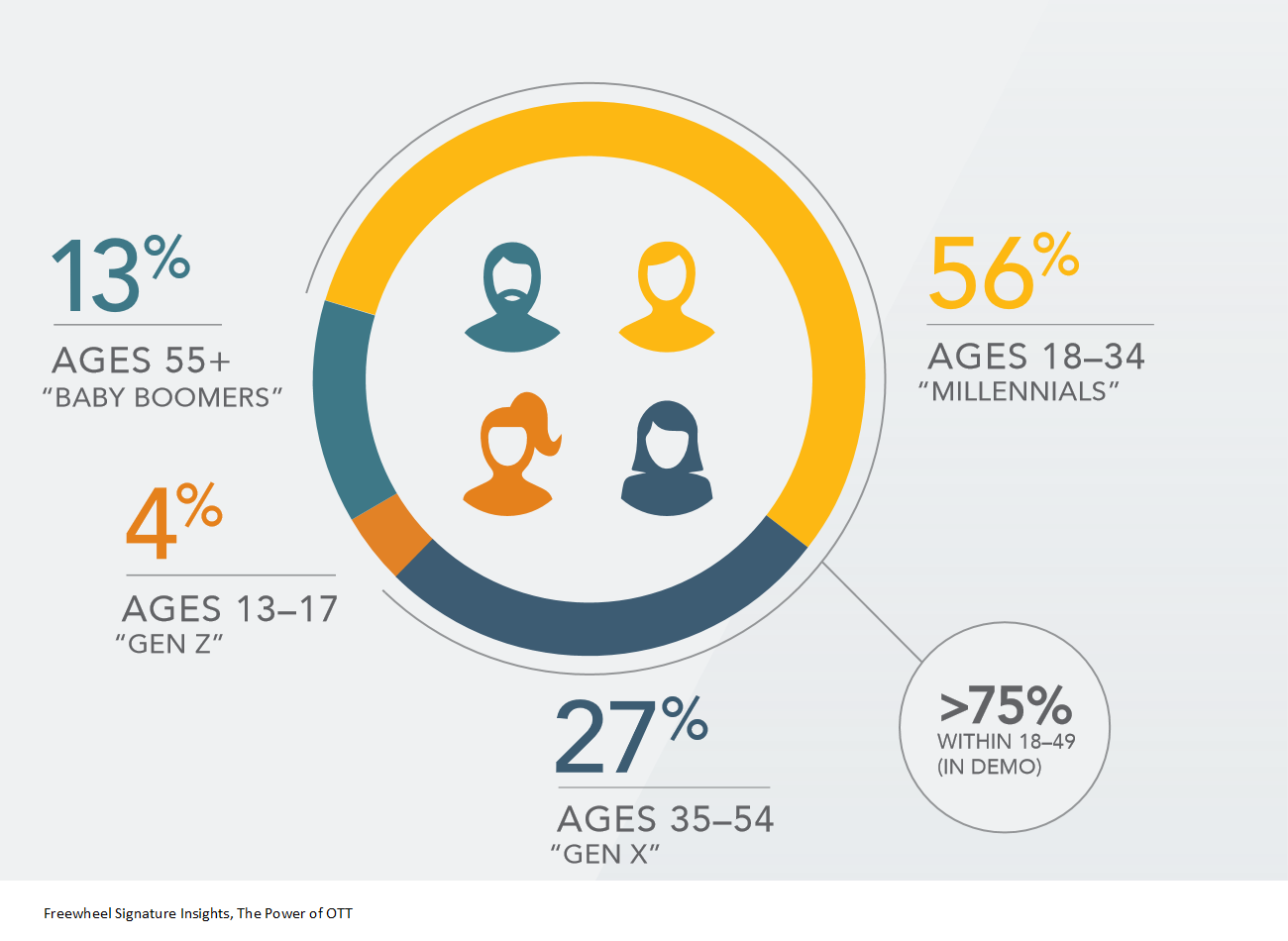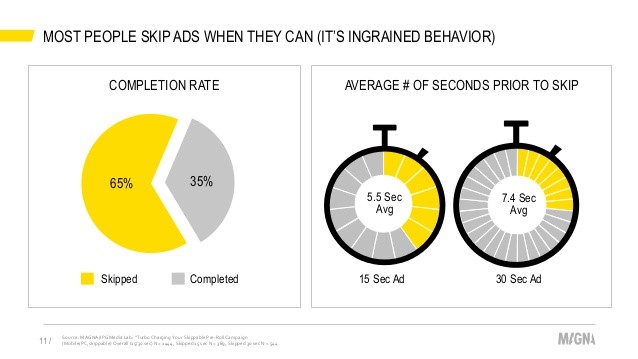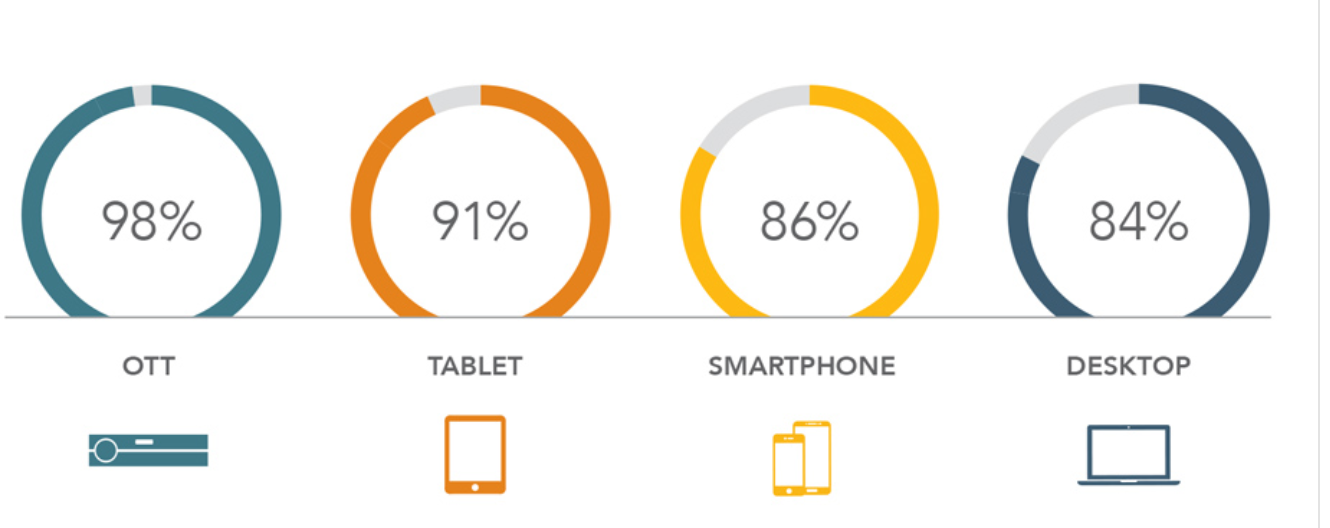DISH on Viewability and Completion Rates

In keeping with its belief that the overall industry will benefit from gaining a deeper understanding of OTT (Over-the-Top), DISH Media Sales has placed a priority on sharing its knowledge and insights, including via this series of articles. Part 1 looked at the overall OTT industry and how DISH was working to address the needs of the OTT buyer. In Part 2, we delved into such topics as ad bots, fraud and brand safety. This final segment covers two more critical areas: viewability and ad completion rates.
According to a recent Insights report from FreeWheel, "The Power Of OTT: Audiences & Engagement," 75% of the OTT audience is in the 18-49 demo, a key audience for many brands. OTT also effectively delivers what many consider the “hard-to-reach audience,” 18-24 year olds. While we know that they are not watching as much traditional, linear TV, they are clearly watching a great deal of live and on-demand content through their OTT devices.

The report also showcases why OTT is becoming so valuable for advertisers, stating: "OTT allows marketers to reach viewers who are harder to find on traditional TV, including affluent Millennials and cord cutters. The median OTT viewer is 23 years younger than TV viewers, and their median household income is nearly $10,000 higher per year than traditional TV households." Additionally, according to the Freewheel Video Monetization Report, OTT premium video monetization grew 32% year over year, claiming the top platform growth.
Jon Anselmo, Chief Digital Officer and President at Omnicom Media Group, commenting about the value of OTT in the FreeWheel report, believes "the rise of video consumption in the living room through OTT devices provides great opportunities for advertisers -- new sources of premium inventory coupled with the ability to align delivery with changing consumption habits allows us to better connect with the consumer and ultimately drive more brand value for our clients."
Viewability
Back in 2011, the ANA, 4As and the IAB worked together to create better standards for digital measurement. According to the IAB State of Viewability, "it was determined that the single most important need is shifting currency from served impressions to viewable impressions." The original standards called for then called for "50% of their pixels are in view for a minimum of one second and for desktop video, that standard is 50% for two seconds. In addition, the standard stipulates that for larger desktop ad units, 30% of pixels in view for one second constitutes a viewable ad."
In a recent MediaVillage article on new viewability requirements from GroupM, they "now require a display ad be 100% in view for one second to count as a viewable impression." For native and outstream videos, they keep the 100% in view requirement, but add that at least 50% of the video be viewed for it to be counted. The most stringent requirements are for pre-roll and mid-roll video, which stay at their 2014 levels: "100% in view, 50% complete and played at the user's initiation and with the sound on."
OTT, and Sling TV in particular, have really solved the viewability issue due to the nature of viewing on their platforms. From a viewability perspective, it's a full-screen television viewing experience. The IAB reports that "OTT video ads tend to be 100% in-view because there is no player to minimize in this full-screen experience."
But, David Smith, writing It's Time to Tighten Up Digital POP for MediaVillage said that in his opinion, "viewability is now just table stakes." He added that what was also needed was "proof that the ad was seen by a human." And that's where the added element of completion rate perfects the value proposition.
Ad Completion Higher with OTT

A Magna report from March of this year entitled the "On Demand Imperative" describes the challenges that many advertisers face today in engaging audiences with only a 35% completion rate on average. However, while viewing time can be as short as 2-3 seconds for other digital ad units, the recent FreeWheel study shows a 98% completion rate for ads on OTT platforms. The same study in 2016 showed a 93% completion rate, indicating the ads on OTT platforms are continuing to grow in their performance.
Looking at the definitions companies are using to define completion further illustrates the power that OTT brings to advertisers. In a recent MediaVillage video interview, Dave Penski from Publicis asks the very critical question, "if the viewing time is only two or three seconds, what is that value exchange with the client?"
Speaking about their report, Kara Manatt, Magna Senior Vice President Intelligence Solutions Strategy, said, "While skipping is an ingrained behavior, more succinct ads, coupled with human connection and good storytelling will help brands more deeply engage with their audiences." That is evidenced in OTT where people are watching a specific piece of content and much less likely to be channel surfing, adding to the higher completion rate. In addition, the ads are frequently high quality with strong storytelling.
Additionally, the growing number of households able to receive addressable advertising means audiences will be able to receive ads that are much more relevant to them, also helping to create higher engagement and completion rates.

Concluding Thoughts

Since we started this series with Creating Clarity in a Changing Media Landscape, we have outlined the many ways that OTT brings value to advertisers. OTT combines the best of both digital and linear TV and brings in an audience that's highly sought after by advertisers.
DISH Media Sales has looked very closely at the challenges facing the digital advertising world and has built their platform with those issues in mind.
- Sling TV is premium content and delivers a premium audience. Viewers are watching live TV and ads are running during those high-quality viewing experiences. This is particularly important at a time when brands are worried about brand safety and where their ads are being placed online. With the live TV that the viewer is watching, brands can have confidence that they don't have to be concerned about this issue with ads placed on Sling TV.
- A recent Business Insider report on ad fraud estimates that $6.4 billion could be wasted on ad fraud this year. A poll by MyersBizNet shows that 78% of brand marketers are concerned with ad fraud and bot traffic. Sling TV has seen zero ad fraud or bots with most of its content streamed via a cookie-less app environment.
- From a viewability perspective, it's a full-screen television viewing experience. You don't have to worry about viewability as you do in other digital spaces. Ads on Sling TV are viewed on 100% of the screen and ads have a 98% completion rate. By contrast, for an ad to be considered viewed in the digital space, 50% of the pixels must be viewable and they must be watched for a minimum of three seconds.
During the recent Advertising Week panel A Bird's Eye View into OTT, Adam Lowy, Director of Advanced TV and Digital Sales at DISH Media Sales, discussed his overall feelings on OTT and what it takes to be successful, advising the audience that they need to "be all in on OTT, from all your different business lines." He also shared that the Sling TV Q1 to Q2 programmatic ad revenue increased 263% and the remarkable fact that they're "bringing in more overall revenue in September than in all of 2016. Things are changing fast." He added, "Programmatic is growing by leaps and bounds. We've done the education and now we're putting it all together and understanding the buy: Is it digital or is it TV? But really, it's both."
So where is it all going? According to a recent Forrester post, the world will be even more of a hybrid in the near term: "National network buys will still be crucial foundations, but will need more and more supplementation with these ... audiences to achieve desired reach." So, with the help of DISH Media Sales and others, marketers should adapt to change by continuing to educate themselves, understanding -- and embracing -- all platforms.
Click the social buttons above or below to share this story with your friends and colleagues.
The opinions and points of view expressed in this content are exclusively the views of the author and/or subject(s) and do not necessarily represent the views of MediaVillage.com/MyersBizNet, Inc. management or associated writers.
If you no longer wish to receive updates from DISH please click here.


